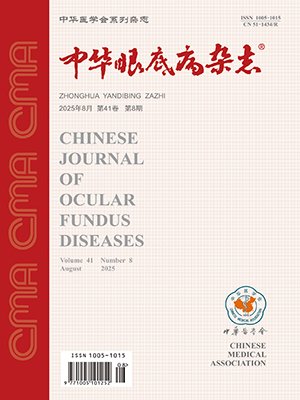Objective To observe the clinical features and outcomes of vitrectomy for diabetic retinopathy (DR) with central retinal vein occlusion (CRVO) in type 2 diabetes mellitus (T2DM). Methods A total of 192 patients (241 eyes) with proliferative DR (PDR) who underwent vitrectomy were enrolled in this study. All the patients were diagnosed as vitreous hemorrhage (VH) because of suddenly decreased vision. There were 93 eyes with tractional retinal detachment (TRD) and six eyes with neovascularization of iris (NVI). The patients were divided into PDR with CRVO group (group A, 41 eyes) and PDR group (group B, 200 eyes) according to the results of fundus examination. All patients received vitrectomy with silicone oil and C3F8 gas tamponade. There were 138 eyes with silicone oil tamponade which including 30 eyes in group A and 108 eyes in group B. The difference of number in silicone oil-filled eyes in two groups was statistically significant ( chi;2=5.110,P<0.05). There were 38 eyes with C3F8 gas tamponade which including six eyes in group A and 32 eyes in group B. There was no difference in C3F8 gas-filled eyes numbers in two groups ( chi;2=0.048, P>0.05). The follow-up ranged from one to 60 months, with the mean of (28.69 plusmn;17.28) months. The corrected vision, retinal reattachment, persisting macular edema (ME), neovascular glaucoma (NVG) and repeated VH after surgery were comparatively analyzed. Results Of 241 eyes, there were 41 eyes (17.0%) with CRVO. Before surgery, the differences of corrected vision (Z=-0.138), intraocular pressure (t=0.966), whether there was TRD or not ( chi;2=0.412), whether underwent panretinal photocoagulation or not ( chi;2=1.416) were not statistically significant (P>0.05), but the difference of whether NVI were present or not was statistically significant ( chi;2=31.724,P<0.05) between two groups. After surgery, the corrected vision improved in both two groups (Z=2.319, 4.589; P<0.05). There was no difference of corrected vision after surgery between two groups (Z=0.782,P>0.05). Postoperative complications occurred in 94 eyes, including 26 eyes in group A and 68 eyes in group B. The differences of incidence of reoperation ( chi;2=0.498), retinal reattachment ( chi;2=0.818), persisting ME ( chi;2=2.722) between two groups after surgery were not statistically significant (P>0.05). The incidence of repeated VH ( chi;2=5.737) and NVG ( chi;2=6.604) in group A were higher than those in group B (P<0.05). Conclusions CRVO is commonly found to coexist with DR in T2DM patients with VH. Combined with CRVO patients are more likely to suffer NVI. Vitrectomy can improve the visual function in PDR with CRVO patients.
Citation: feng jiang,han jindong. Clinical features and outcomes of vitrectomy for diabetic retinopathy with central retinal vein occlusion. Chinese Journal of Ocular Fundus Diseases, 2013, 29(6): 567-570. doi: Copy
Copyright © the editorial department of Chinese Journal of Ocular Fundus Diseases of West China Medical Publisher. All rights reserved




